How to Balance Form, Function, and Sweet Dreams When Designing Your Child's Bedroom
By Ashley Patterson
When I was pregnant with my first child, I went a little nuts designing the nursery (I’m not alone here, right??). I spent countless hours pulling inspiration, commissioning custom furniture pieces, and sourcing the perfect art and accessories. And I nailed the “form” part of the assignment, if I do say so myself. It was an incredibly bright, happy space that brought both my son and me a lot of joy.
Then reality hit.
Those gorgeous custom furniture pieces with their sharp, angular edges? They spent most of their lives covered in corner protectors. The adorable baby animal prints carefully hung above the changing table? Some had to come down once my little one started grabbing for everything within reach. And that beautiful light-filled corner room with four massive windows? Let's just say I spent many nap times tucking curtains into various nooks and crannies in a desperate attempt to create darkness.
The truth is, balancing form, function, and SLEEP in your child's room is a delicate dance – one that I've learned a lot about through trial, error, and yes, some middle-of-the-night regrets. Here's how to create a space that works as beautifully as it looks.

design: Instillerie & DeLuzuriaga Studios, photo: Sean Litchfield
Embracing Form: The Joy of Design
Designing your child's room can be one of the most meaningful (and fun!) projects you'll take on as a parent. There's a quote I read recently from designer Beata Heuman that really stuck with me: “Children's rooms are ingrained in their memory forever. This is the room that's going to be the most important in their life.”
With that in mind:
Don't skimp on the fun and whimsy. Children's rooms should feel magical and full of personality. Whether it's a treehouse-inspired bunk bed like the one pictured below, whimsical wallpaper, or unique lighting, these special touches create the backdrop for childhood memories.
Mix and match themes with confidence. I remember wondering if I could have a custom robot bookshelf alongside baby animal prints and a vintage Atari side table in my son's room. The answer? Absolutely yes. Children's spaces don't need to adhere to a rigid theme – they can be eclectic and evolving, just like kids themselves.
Invest in pieces that grow with your child. I installed a swing arm sconce above my son's crib with a special origami turtle lantern that I painstakingly assembled (it had approximately 8,463 tiny pieces that needed precise gluing... okay, I exaggerate, but it was quite the project!). Years later, we still use that same swing arm light, we just swapped the turtle out with a Noguchi lantern.
Let window treatments and wall coverings bring personality. Whether it's sheer white curtains that filter sunshine beautifully or a bold wallpaper that transforms a space, these elements add depth, texture, and character to even the simplest room.
Everything doesn't have to be childish. I love selecting beautiful art with my children – pieces that speak to them but aren't necessarily "kid art." The mint green desk below paired with mixed vintage and contemporary art is in a corner of my 5-year old daughter’s bedroom, which she helped design. It illustrates how various elements can come together to create a space that feels special and unique to your child.

design: Instillerie; photo: Katelyn Perry

design and photo: Instillerie
Prioritizing Function: The Reality Check
Don't get so married to form that you sacrifice function. Your child's room will inevitably accumulate toys, books, and various treasures. Here's how to prepare:
Storage is critical. Whether it's built-in bookshelves like the red ones pictured under the eaves, cloth bins, structured storage benches, or baskets – make sure you have somewhere to quickly and easily organize the kid-related chaos that will inevitably take over.
Safety first, always. If you're designing for a baby or toddler, remember that they fall. A lot. Rounded corners and soft materials are your friends. Those Instagram-perfect marble side tables? Maybe save those for another room.
Don't invest in anything too precious. You want your child to feel comfortable in their space, not like they're tiptoeing around museum pieces. That's not to say you can't teach respect for belongings – but kids will be kids, and occasionally they'll color on walls or spill something on the rug.
Adapt the space as they grow. As your child's interests become clearer, their room should reflect them. My son is an avid reader, so we built him a custom bookshelf to house his ever-growing collection. My daughter wanted an "office space," so we found a vintage desk and created a special corner just for her creative work.

design & photo: Instillerie
Sweet Dreams: Creating a Sleep Sanctuary
All the beautiful design in the world doesn't matter if your child can't sleep well in their room. My son was a white noise machine, pitch-black room kind of kid, which made his sunny corner room in our Brooklyn apartment a challenge.
Consider the light situation carefully.
If I could have invested in just one thing, it would have been remote-controlled window treatments with blackout lining. At minimum, invest in proper curtain hardware – French return rods would have saved me from stuffing curtains into window frames in desperation.
Think through the bedtime routine. While bunk beds like the one pictured can be fantastic space-savers, if you'll be reading to your child every night, a twin bed isn't ideal for snuggling up. Consider adding a comfortable chair nearby, or opt for a full-sized bed that allows for side-by-side reading.
Incorporate soft, comforting textures. Cozy elements help create a calming environment. We love sheepskin rugs, linen blankets, sumptuous curtains, and fluffy comforters that make bedtime feel special and soothing.

design & photo: Instillerie
The nursery and children's rooms pictured here showcase how you can achieve this balance – from the minimalist yet warm nursery with its simple crib and comfortable sofa, to the artful desk area with its mix of playful and sophisticated elements, to the brilliant use of awkward under-eave space transformed into functional book storage.
Remember, the perfect children's room isn't just about creating a beautiful space – it's about creating a room where your child feels safe, inspired, and comfortable. A place where they can play, dream, create, and yes, occasionally make a mess. Because that's what childhood is all about.



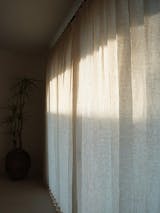
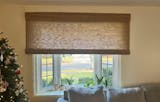

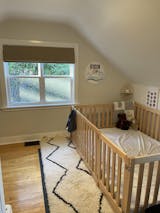


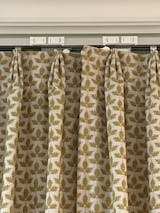
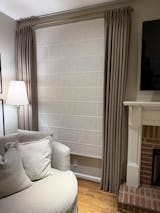

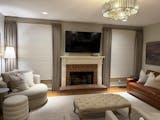



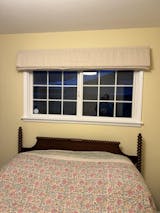
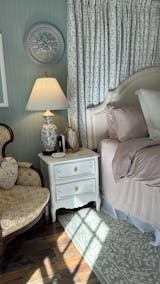
Leave a comment